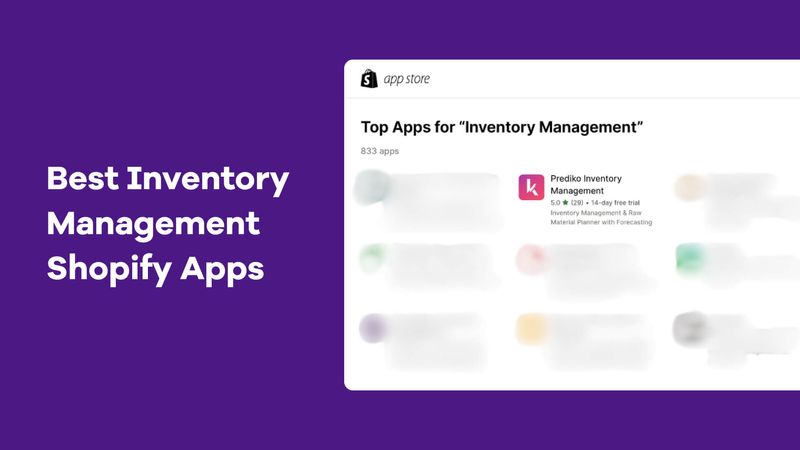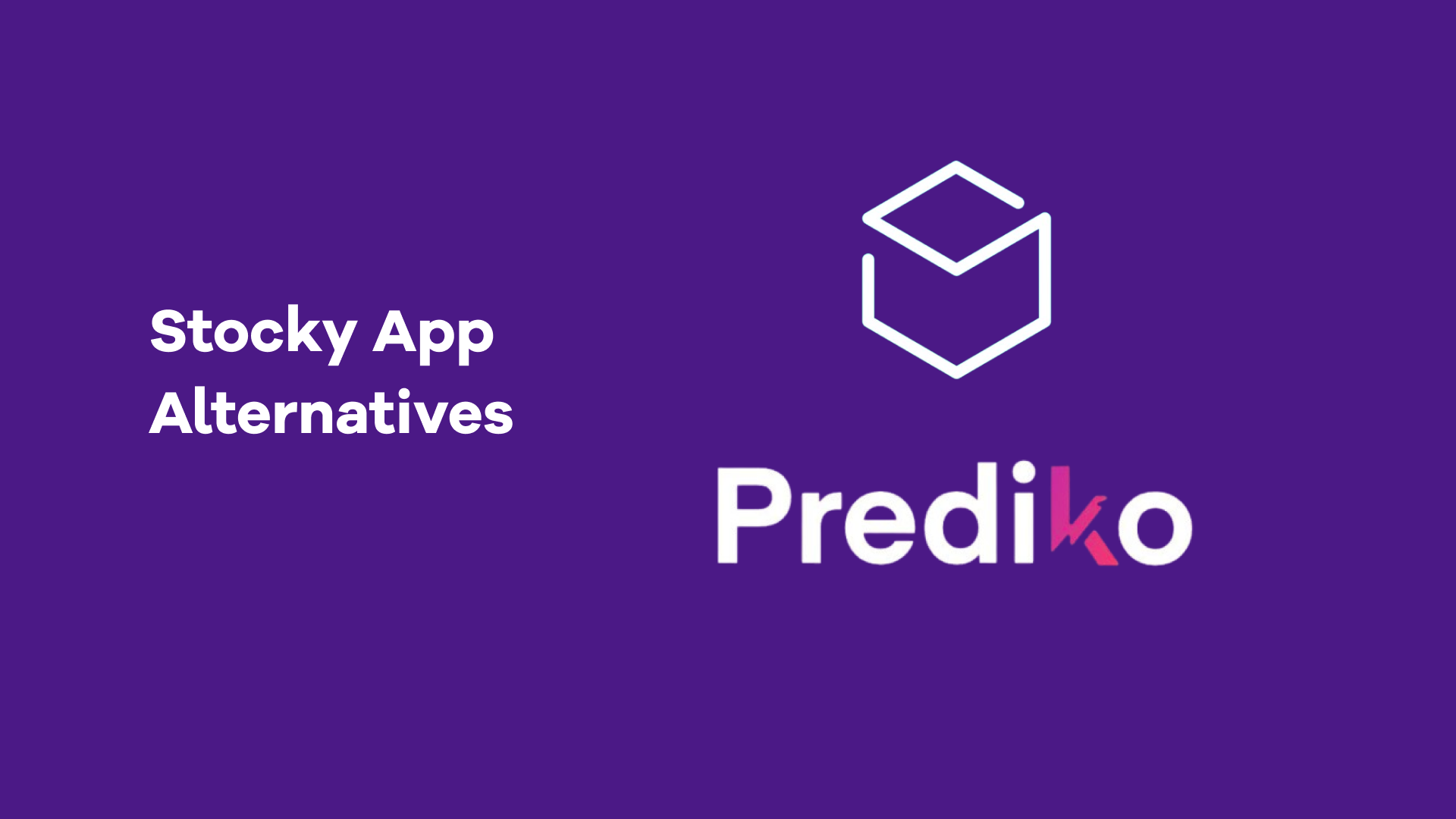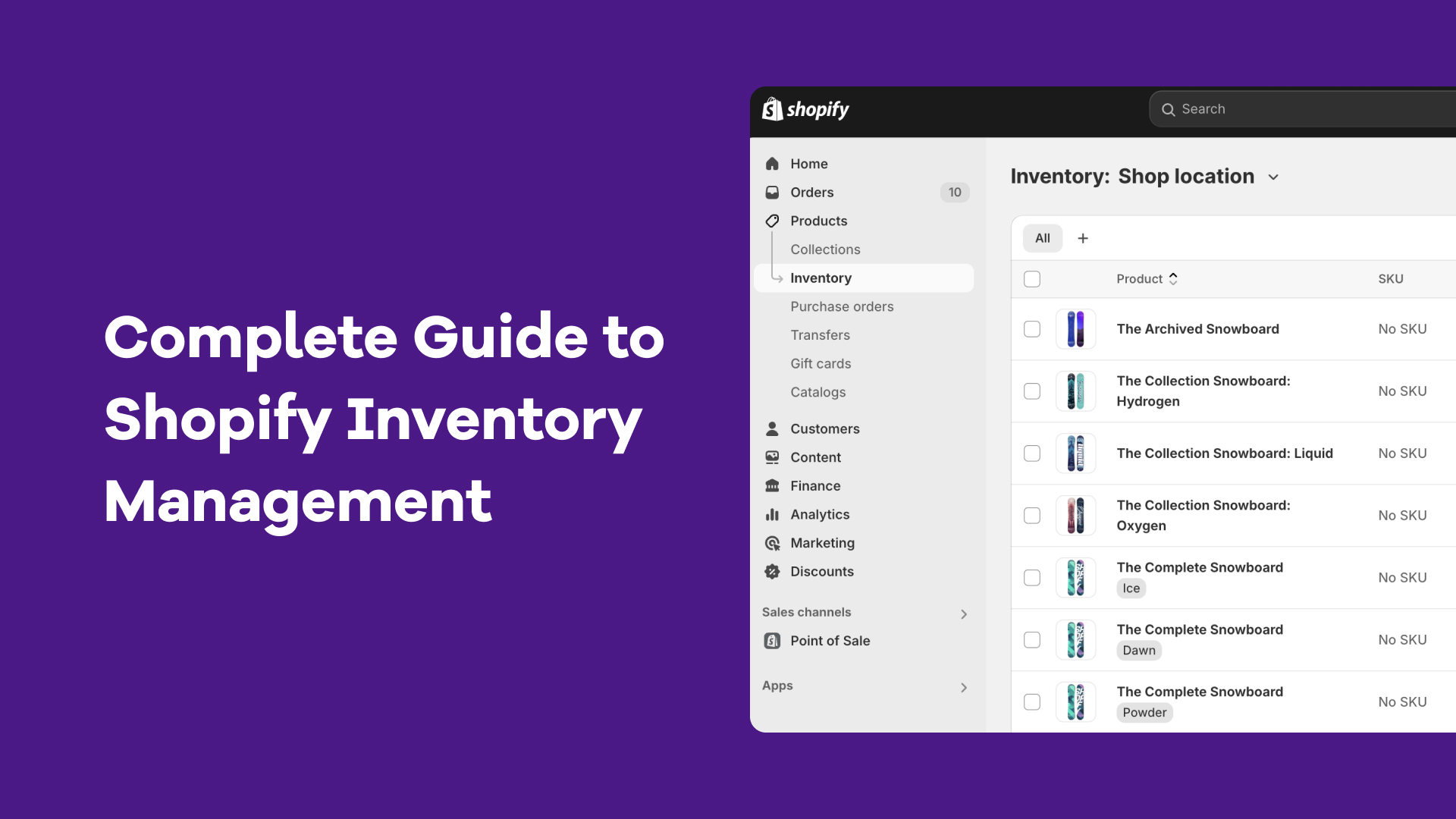$349 billion. That is what retailers across the US and Canada gave up in terms of sales in 2022 because of inventory issues—overstocks, out-of-stocks, and everything in between.
Every stockout means lost sales, and every overstock ties up cash in inventory that may never move. The cost adds up fast, and retailers pay the price.
And oftentimes, the culprit is poor replenishment planning.
In this post, we cover why replenishment planning is important, best practices, key components, and the challenges you need to prepare for in 2025.
What is Replenishment Planning
Replenishment planning is the process of deciding when and how much stock to reorder to make sure supply matches expected demand. It helps avoid running out of products or ending up with too much inventory that just sits.
It comes with some key terms that you should know
- Reorder Point (ROP): The inventory level at which a new order should be placed. It accounts for lead time and average daily usage.
- Lead Time: Time taken from placing an order to receiving it. Includes internal processing and supplier delivery time.
- Order Quantity: The amount of product ordered once the reorder point is hit. Often set using methods like EOQ (Economic Order Quantity).
- Safety Stock: Extra inventory kept as a buffer against unexpected spikes in demand or delays in supply.
- Service Level: The percentage of demand fulfilled without stockouts, often tied to customer satisfaction goals.
- Lot Size: The number of units ordered in one batch. It can be fixed or variable based on supplier constraints or cost considerations.
Now, before you do any replenishment planning, make sure your inventory data is accurate. The entire process is built on that foundation.
If the system shows 200 units but only 160 are actually available, the problem isn’t just with the plan, it’s with the data feeding into it. If the root is wrong, everything that follows breaks: orders go in too late, stock runs out, or products pile up where they’re not needed.
Remember, replenishment planning isn’t the same as demand planning. Demand planning focuses on forecasting customer needs. Replenishment planning takes that forecast and makes sure the purchase order timing and quantities are aligned with customer demand.
What are the key components of effective replenishment planning?
Replenishment planning relies on several important components to ensure products are available when and where they’re needed, while keeping costs under control.
These include
1. Forecasting Demand
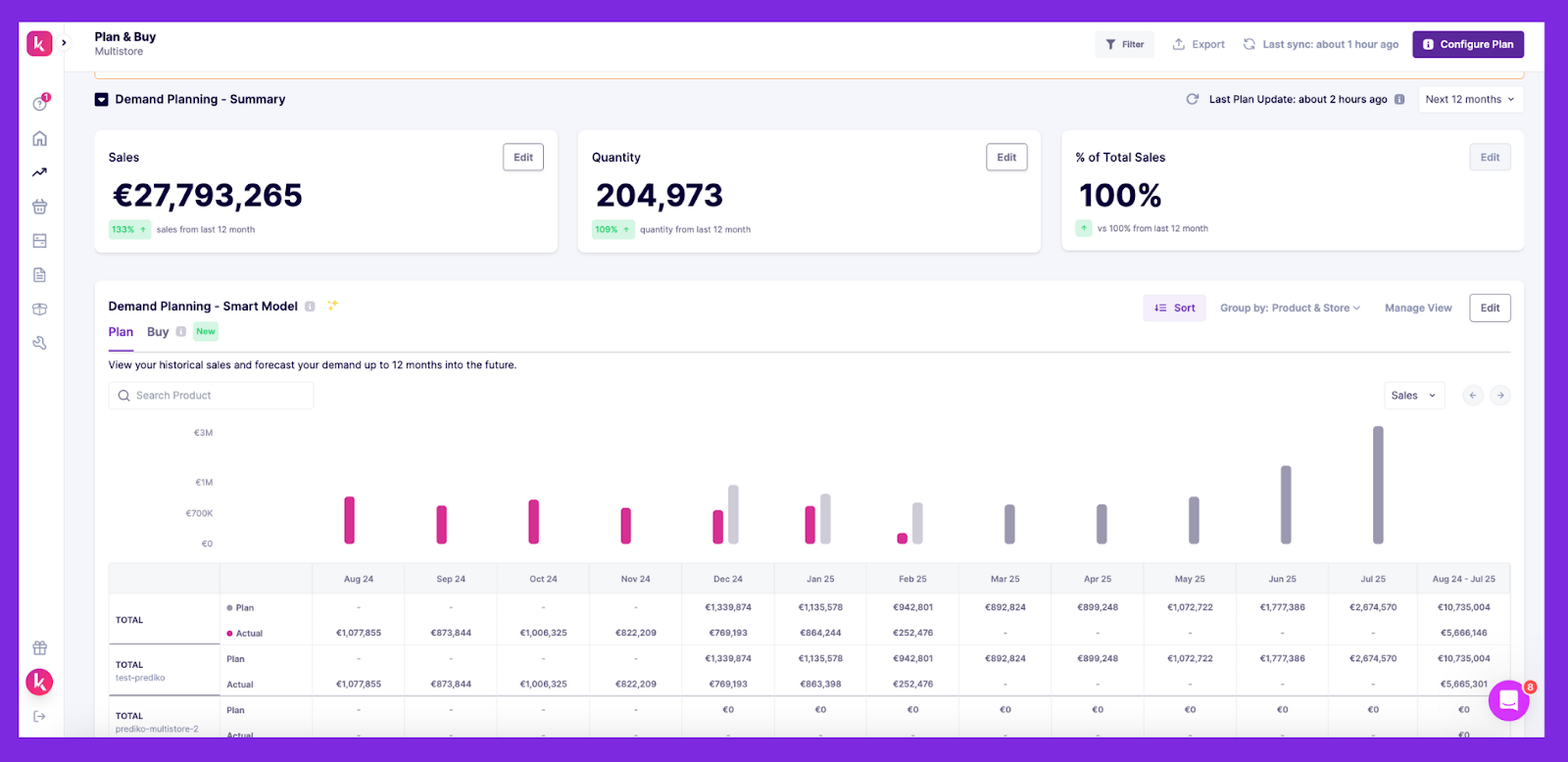
To plan replenishment effectively, you first need to understand what customers are likely to order. It’s about predicting future sales so you know what stock will be needed. The prediction doesn’t need to be perfect, but it needs to give you a realistic baseline to work from.
There are several techniques used for forecasting. Here’s a quick rundown
- Historical averages offer a basic forecasting method. They take past sales and average them out over time. This works well when demand patterns stay steady.
- Advanced models like moving averages, exponential smoothing, or ARIMA help catch trends and seasonal shifts. These models respond better when demand patterns aren’t flat.
- Demand planning tools such as Prediko bring in statistical forecasting alongside AI algorithms and real-time inputs. They combine past sales with current insights, like upcoming promotions or seasonality.
2. Inventory Management
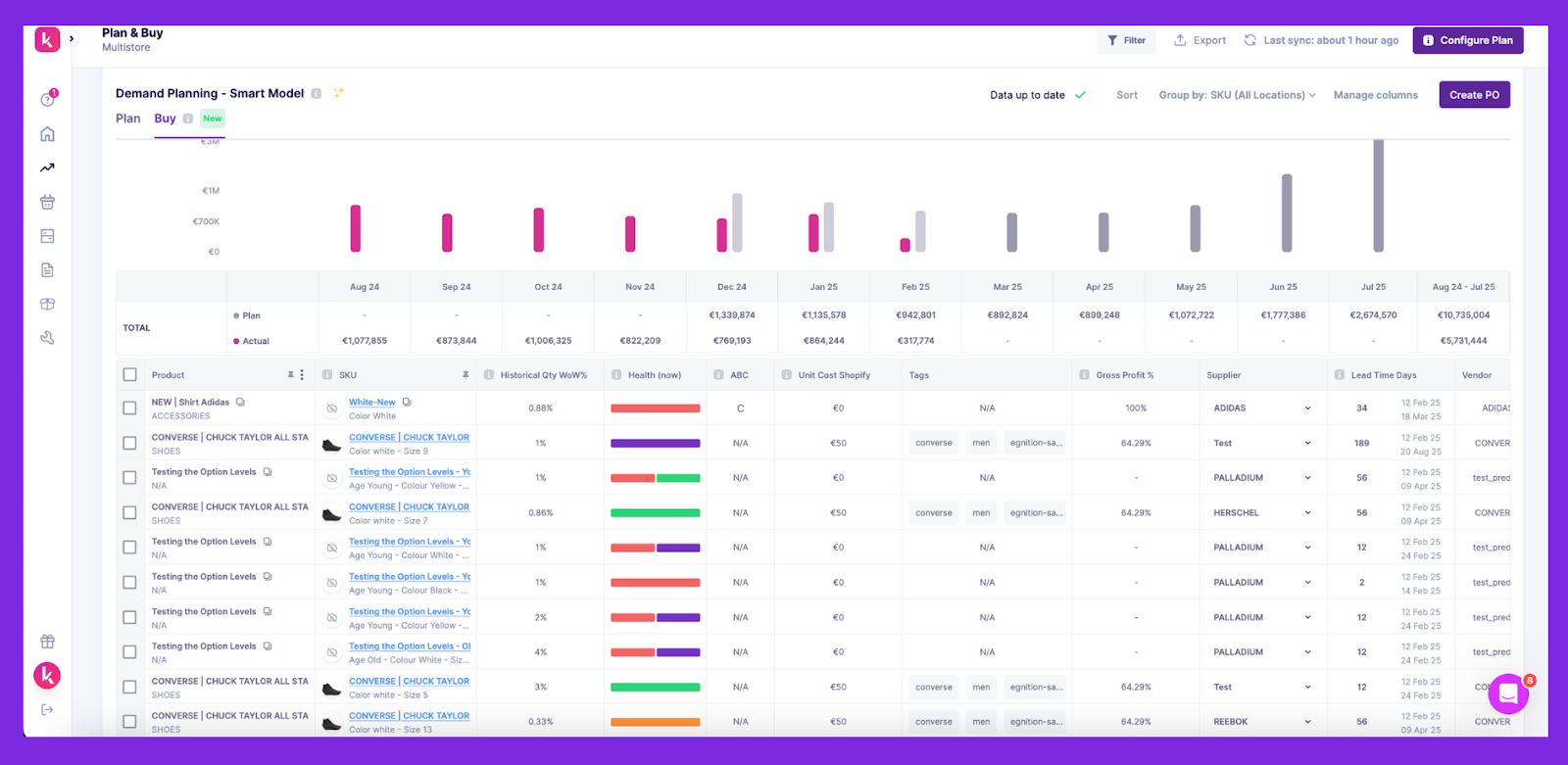
Once demand forecasting gives you a sense of what’s needed, inventory management provides the current state of what’s available. It tracks stock levels, monitors incoming and outgoing orders.
The core of this process includes
- Reorder points: Set the level where stock falls low enough to trigger a new order or notification
- Safety stock: Acts as a buffer against unexpected demand spikes or supply delays
- Cycle counts: Small, regular audits of inventory that ensure system data matches what’s physically in storage
For example, a warehouse that updates its cycle counts weekly is less likely to face surprises when placing replenishment orders. If reorder points are set based on inaccurate inventory data, replenishment plans will fail, leading to either stock shortages or surpluses that take up valuable space.
Remember, if you have in-house manufacturing, you must track both raw materials and finished goods so that you can align production and demand.
3. Replenishment Methods
There’s no single way to replenish stock. The method you choose depends on how steady the demand is, how flexible your suppliers are, what you want to replenish –raw materials, finished goods, or both, and how your operations are set up.
Here’s a list of different methods
- Just-in-time (JIT): Orders only what’s needed, right before it’s needed. Works best when demand is predictable, and supplier lead times are short
- Minimum order quantities (MOQs): Supplier-enforced minimums, even if demand is lower
- Periodic replenishment: Reviews stock at set intervals (weekly, monthly) and orders accordingly
- Continuous replenishment: Monitors stock levels in real time and automatically triggers orders whenever inventory drops below a set threshold
The method depends on what you’re selling and how your supply chain works. For variable demand, continuous replenishment helps avoid stockouts. For stable, bulk products, periodic ordering might be enough.
4. Supplier lead time analysis and relationship management

Lead times, the time between placing an order and receiving it, directly impact replenishment inventory planning.
Supplier lead time analysis tracks how long it really takes to get goods, identifying gaps between promised and actual delivery times.
If a supplier says ten days but often takes fifteen, replenishment plans need to adjust for that lag. This is why tracking supplier performance over time is key.
Measuring the consistency of deliveries, tracking delays, and understanding the reasons behind them gives replenishment planning a more accurate window to work with.
💡Learn how to choose the right supplier for your Shopify store in this quick guide
Relationship management with suppliers ties into this. Suppliers who communicate regularly and provide updates on potential delays allow for faster adjustments when plans shift.
Lead time analysis combined with supplier collaboration ensures replenishment planning isn’t operating on assumptions but on actual, observed performance.
Prediko’s replenishment planning software brings all the above components together –demand forecasts, supplier lead times & communication, inventory management, raw material forecasting, so that your replenishment planning is accurate and fast.
Best Practices for Effective Replenishment Planning
The following best practices simplify replenishment planning and help you stay in control when things get unpredictable.
1. Implementing real-time analytics and reporting
Inventory planning and replenishment work best when you aren’t relying on yesterday’s data to make today’s decisions.
That’s where you need real-time analytics and reporting. This ensures purchasing decisions reflect stock levels, sales, and supplier updates as they happen, not after the fact.
Adding a layer of real-time analytics helps you
- Monitor live inventory and sales data across all channels
- Identify and address supplier delays promptly
- Adjust purchase orders in response to real-time demand fluctuations
Here’s how to bring real-time analytics into your replenishment planning process
- Integrate systems such as ERP, warehouse management, POS, and supplier data into a unified platform like Prediko
- Establish automated alerts for low stock levels, delayed shipments, or unexpected demand spikes
- Use dashboards that provide real-time visibility into key performance indicators across products and locations
Prediko’s replenishment planning solution does all of this and more. It connects directly with your Shopify store, pulling in sales, inventory, and supplier data to give you a live view of your inventory performance. It integrates with 60+ WMS, 3PLs, and other important tools in your tech stack so that you have a unified visibility to make smart decisions quickly.
Prediko’s reports & analytics also share some key takeaways like
- Percentage of plan achieved (how close you are to hitting your sales targets)
- Number of POs late or due for delivery, helping you catch supplier delays early
- Alerts for SKUs in excess or at risk of stockouts, so you can focus on what needs attention
Everything is designed to keep you informed in real-time for educated decision-making.

2. Establishing a collaborative approach across departments
Replenishment planning involves more than just the inventory teams or planners. Sales knows when demand might spike, marketing has promotions lined up, procurement is dealing with suppliers, and finance is balancing the budget.
But when these departments don’t share what they know, replenishment plans get disconnected from what’s really happening.
Here’s how you can approach this
- Take input from sales teams to build sales forecasts, incorporating pipeline deals or customer trends
- Build marketing calendars with marketing teams, keeping in mind promotions or launches
- Get supplier updates from the procurement team, including lead times, pricing, or availability issues
- Team up with the finance team to finalize the budget, which affects order quantities and timing
This helps align everyone and reduces surprises down the line.
3. Building supplier relationships for better visibility
A solid replenishment plan can fall apart if supplier communication is weak. Even the most accurate demand forecast or stock tracking won’t save you from a sudden raw material shortage or a delayed shipment on your supplier’s end.
Suppliers hold the keys to your Shopify brand’s success, which is why building strong supplier relationships matters.
Now, how do you build those relationships?
- Start by making communication two-way. Instead of just sending purchase orders, share your demand forecasts so suppliers can plan their production and logistics around your needs.
- Schedule regular check-ins, not just quarterly reviews. Monthly calls, or even bi-weekly for critical items, create space for suppliers to bring up issues they might otherwise keep to themselves.
Before seasonal peaks or planned promotions, try to engage in advance with the suppliers. This gives both sides time to adjust production schedules or shipping windows.
Video calls, supplier site visits, or even informal chats at industry events can strengthen trust. What matters is consistency and openness.
The more suppliers trust you, the more likely they are to reciprocate with the early warnings and flexibility that keep replenishment running smoothly.
With Prediko, supplier communication happens where it should—at the source of your planning. Update and share purchase orders in real time, leave notes directly on POs, and keep your suppliers aligned without the endless back-and-forth.
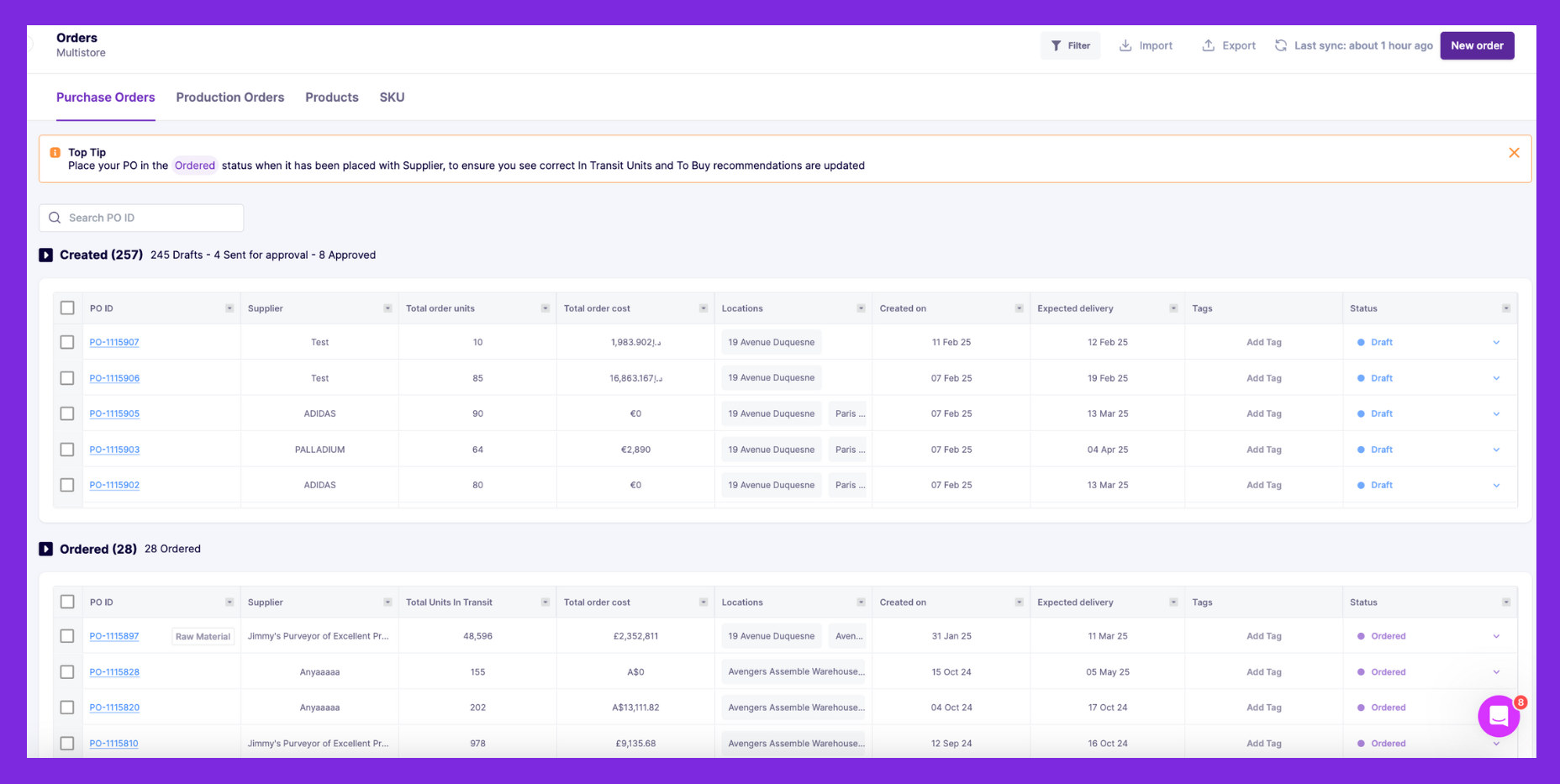
4. Using demand forecasting to guide purchasing decisions
Without forecasting demand, replenishment planning feels like rolling the dice. Sometimes you hit the mark, but most of the time, you're either holding too much stock or struggling to catch up.
That’s why forecasting matters; it gives you a window into what’s coming next, so purchasing decisions aren’t left to chance.
For accurate replenishment planning, you need demand forecasts that go beyond just sales data. Include seasonality, marketing campaigns, and external factors in your forecasts while pairing them with real-time data.
Prediko’s AI demand planning helps build a clear replenishment plan for both finished goods and raw materials. It analyzes historical sales data, seasonality, growth trends, and revenue targets to forecast demand across the next 12 months, breaking it down month by month, so you can plan well in advance.
This connects directly to purchasing decisions. Prediko turns these forecasts into a buying plan, highlighting which SKUs or raw materials need reordering, in what quantities, and when based on supplier lead times and current sales pace.
As conditions change, maybe a product starts moving faster than expected or a delivery runs late, Prediko updates these recommendations so that demand is aligned with supply conditions.
Challenges in Replenishment Planning for 2025 (+ Solutions)
Below are some common challenges you’re likely to face during replenishment planning, along with practical ways to solve them.
1. Supply chain disruptions and trade uncertainty
Global supply chains are undoubtedly unstable.
Tariff changes (like the recent ones in the U.S.), rising geopolitical tensions, and shifting supplier production across regions –all disrupt lead times and pricing.
For replenishment planning, this means it’s harder to predict when stock will arrive, how much it will cost, or even if it will arrive at all.
Solution
Stay flexible. Work with multiple suppliers across different regions where possible. Build scenarios into your planning –what happens if lead times double? What happens if tariffs increase by 10 percent? Instead of relying on a single forecast, create a range of plans that cover different outcomes.
If you’re using Prediko, you can easily edit plans to see how different numbers impact your outcomes, including sales. This lets you compare options in real time and choose the most viable plan.
2. Balancing cash flow with timely order fulfillment
Stocking up early protects against shortages, but it ties up cash. Delaying orders preserves cash flow but risks stockouts.
With interest rates getting higher and capital tighter in 2025, this balance is harder than ever. Finance wants lean inventory. Operations want stock availability.
Solution
Use more dynamic replenishment cycles. Instead of fixed ordering schedules, tie reordering more closely to real-time demand.
This helps avoid over-ordering when demand is low and nudges you to purchase more when it spikes.
Prediko helps you run lean inventory operations with low stock, stockout, and excess stock alerts so that you can easily balance cash flow with timely order fulfillment.
Also, collaborate more with the finance team so that both teams agree on when to prioritize cash flow and when to prioritize availability.
3. Overreliance on historical data
Consumer behavior now shifts faster than traditional forecasting models can handle. Trends emerge and fade quickly, making past sales an unreliable predictor of future demand.
Solution
Blend historical data with real-time demand signals. This includes monitoring social media trends, growth trends, and other external factors affecting demand to make the replenishment planning accurate.
For example, if a product is suddenly gaining traction online, that signal should feed into the forecast before sales data shows it.
Use shorter forecast cycles with frequent adjustments, not just annual or quarterly reviews. This keeps replenishment decisions aligned with current demand patterns, not last year’s.
4. Labor shortages and operational delays
Even with inventory on hand, labor shortages in warehouses and transportation slow everything down. Products sit in containers because there aren’t enough people to move them.
Solution
Factor in operational lead times, not just transit times, when planning replenishment.
This means adding extra days for unloading, receiving, and processing stock. Don’t expect stock to arrive just in time if you know there are labor shortages at the docks or in the warehouse. Take enough buffer time.
Use Prediko for End-to-End Replenishment Planning
Prediko makes replenishment easier with real-time alerts and nudges on stock levels for both finished goods and raw materials. Its AI demand forecasting goes beyond past sales, factoring in seasonality and growth trends, so you order exactly what’s needed.
It makes replenishment planning a continuous process and offers you features to effectively manage inventory as well as supplier relationships.
Sign up for a 14-day free trial and see how Prediko keeps your replenishment planning simple and accurate.



.avif)



